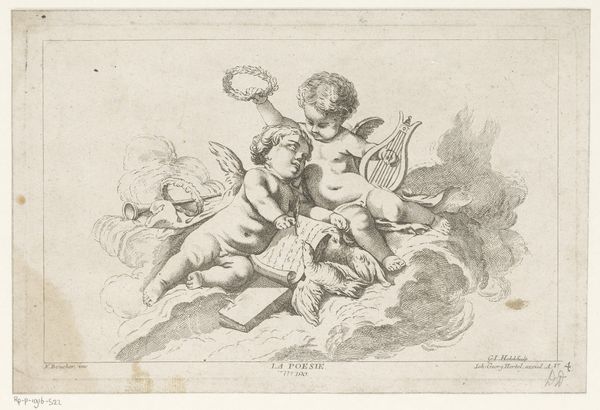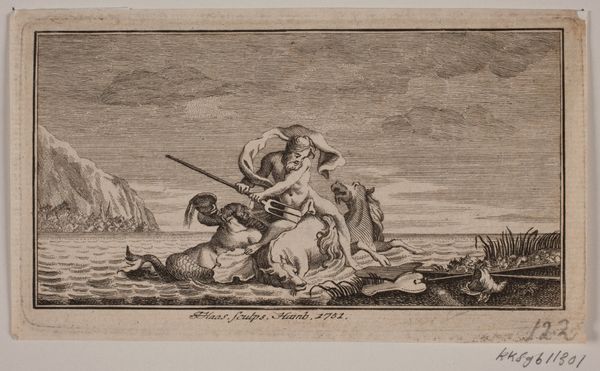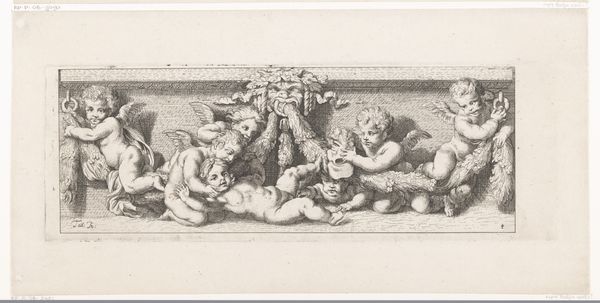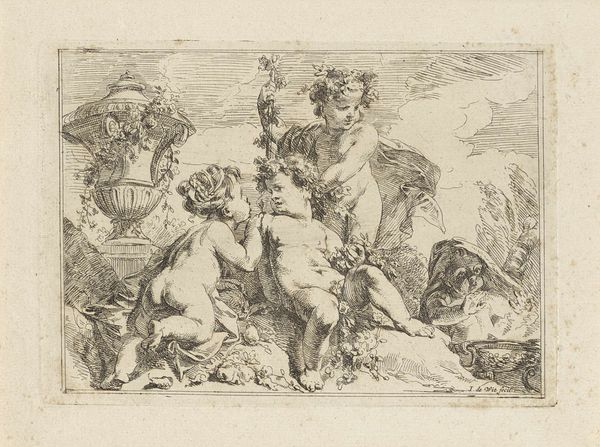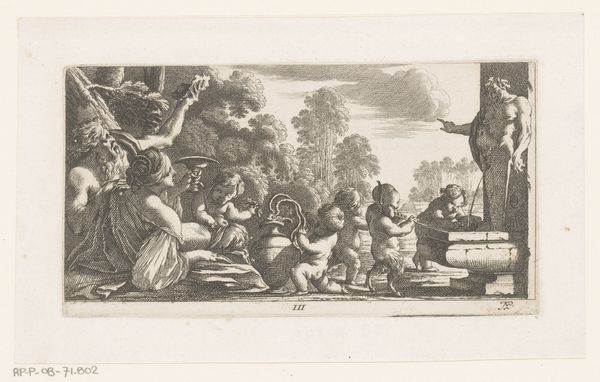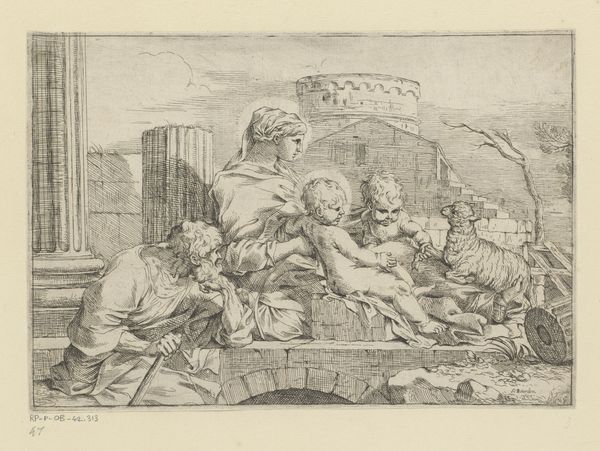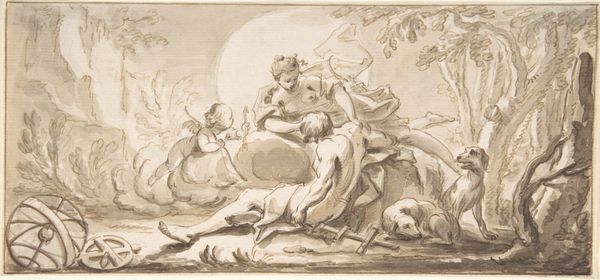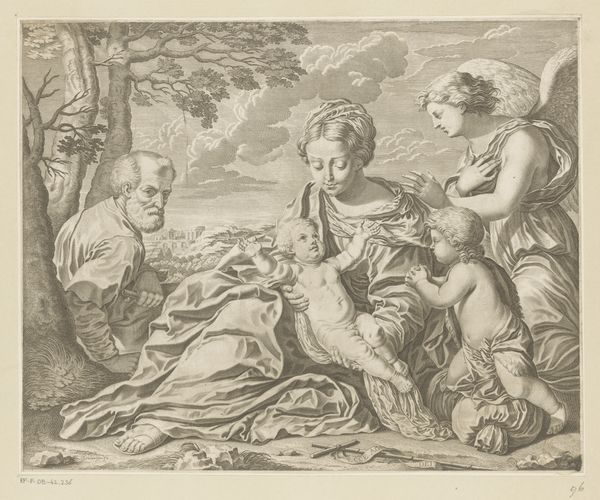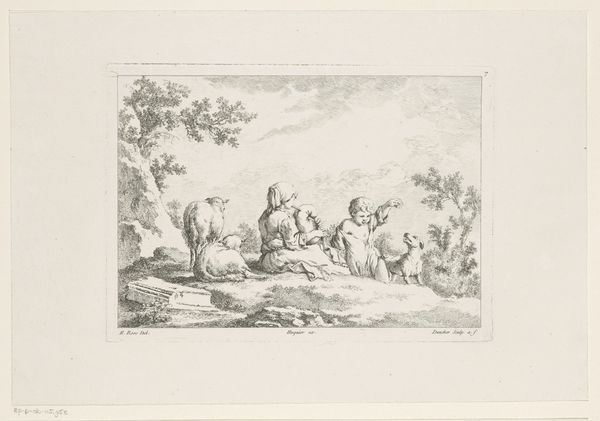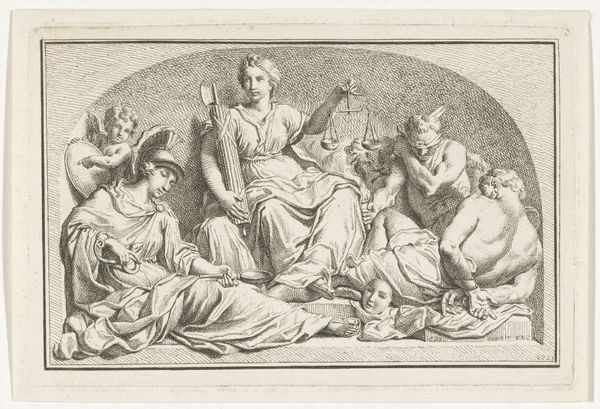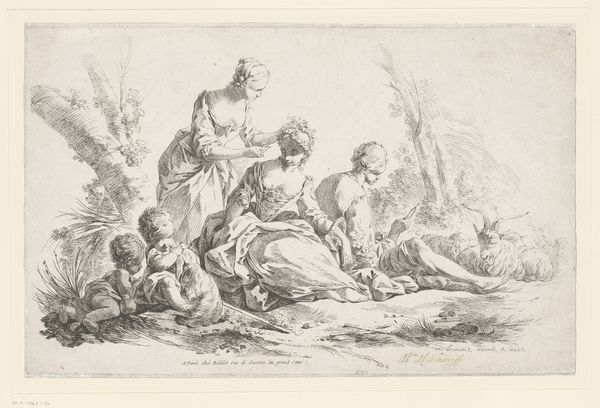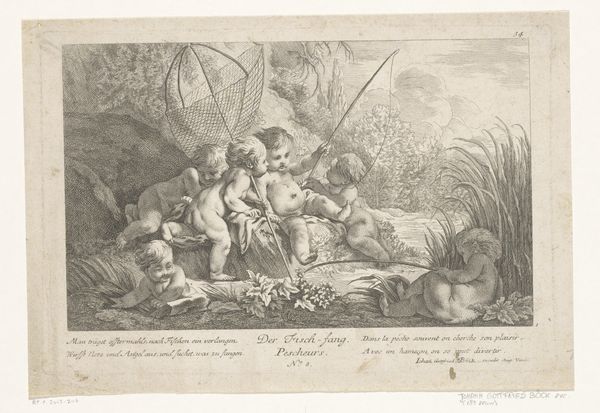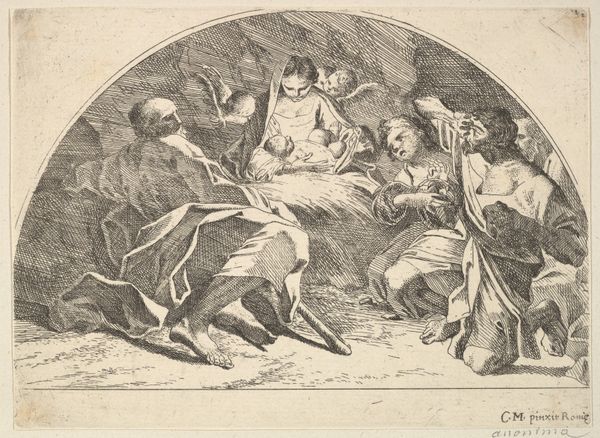
drawing, print, pencil
#
drawing
#
neoclacissism
#
allegory
# print
#
pencil sketch
#
figuration
#
pencil
#
history-painting
Dimensions: height 328 mm, width 543 mm
Copyright: Rijks Museum: Open Domain
Curator: This detailed pencil drawing, dating back to 1846, is entitled "Drie schikgodinnen," or "Three Fates," by Alphonse-Victor Colas. Editor: Immediately, I'm struck by the contrast! The medium itself—pencil—offers a delicate intimacy that sharply opposes the grand, almost theatrical solemnity of the Neoclassical figures portrayed. Curator: Exactly! Colas cleverly uses that contrast to his advantage. Note how the seemingly fragile lines create monumental figures with all the pomp expected in depictions of fate. There's something unsettlingly modern about that self-aware application of a humble material for such a high-minded concept. Editor: Absolutely, especially when examining the symbols each figure embodies. On the left, the spinner of the thread of life, representing birth and beginnings, is followed by the measurer of life, denoting our journey and choices, and, finally, on the right, the cutter of the thread, signifying death, cloaked, ominous and very corporeal, her aging is beautifully captured. It’s a concise and deeply resonating cycle! Curator: Fascinating! Focusing on the act of drawing itself, we can also see how Colas employs the reproductive possibilities of prints—multiplying the dissemination of classical themes within bourgeois culture. This allows us to see how materials become potent actors in cultural transmission. Look closer at the cross hatching of the shadows—can’t you see Colas' careful hand creating an effect with the simple tools? Editor: True! By re-imagining this timeless allegorical scene using such commonplace materials and modes of production, the artist does, indeed, provide a potent commentary on the intersection of art, industry, and Neoclassical symbolism in the mid-19th century. Curator: Indeed, that is where its power lies. Thanks for guiding us through this piece, I feel like my knowledge expanded! Editor: The pleasure was all mine! Such artwork reminds us of art's crucial power, in mirroring ourselves through iconography, reminding us we weave meanings through these cultural products!
Comments
No comments
Be the first to comment and join the conversation on the ultimate creative platform.
